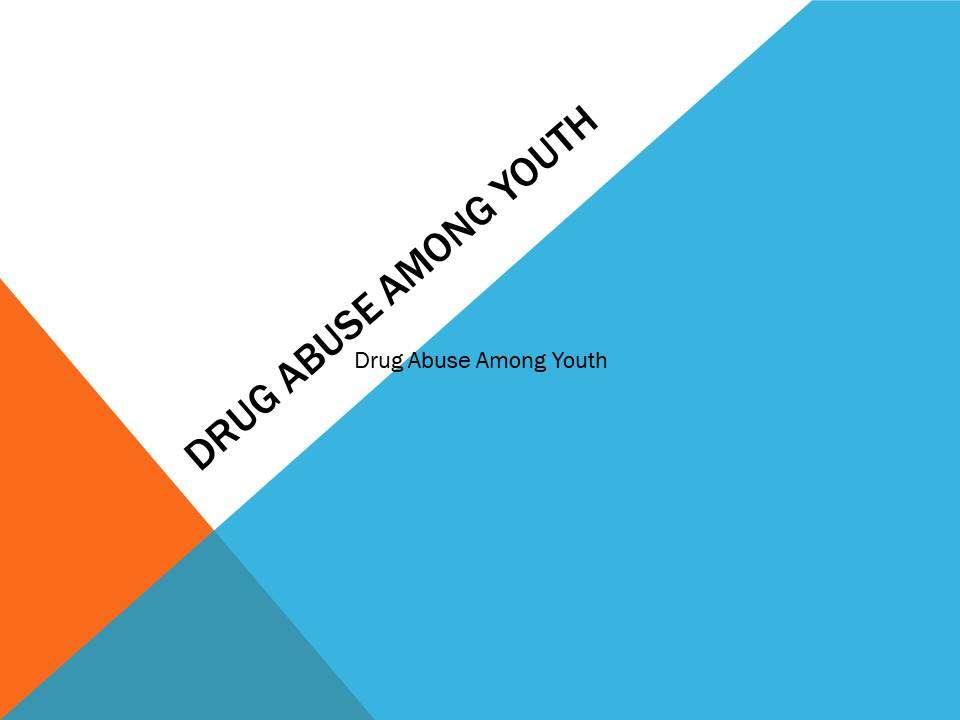Analyzing the Impact and Benefits of Extended Health Insurance Coverage for 90 Days: A Comprehensive Study
Introduction:
In the United States, the topic of health insurance has been a subject of ongoing debate and discussion. With healthcare costs on the rise and the ever-changing landscape of insurance coverage, understanding the impact and benefits of extended health insurance coverage for a period of 90 days becomes crucial. This comprehensive study aims to delve into the American context, shedding light on the implications and advantages of such extended coverage.
- The Current State of Health Insurance in the United States
The American healthcare system has long been a topic of discussion due to its complexity and the challenges individuals face in accessing affordable and comprehensive health insurance. While there are various options available, such as employer-sponsored plans, private insurance, Medicare, and Medicaid, many people still struggle to obtain the coverage they need.
One significant issue within the current state of health insurance is the limited duration of plans. Many insurance policies provide coverage for a specific period, often tied to employment or other factors. This limited duration can create gaps in coverage, leaving individuals vulnerable to unexpected medical expenses and inadequate access to care.
Furthermore, short-term health insurance plans, which are often used as temporary solutions, typically offer limited coverage and may not include essential benefits such as preventive care or pre-existing condition coverage. This leaves individuals with potentially significant gaps in their healthcare coverage and exposes them to financial risks if they require medical treatment during those periods.
Another challenge is the high cost of health insurance in the United States. Premiums, deductibles, and co-pays continue to rise, making it difficult for many individuals and families to afford comprehensive coverage. This affordability issue, coupled with limited duration, contributes to a healthcare system where individuals may be uninsured or underinsured, leading to delayed or forgone medical care and potential negative health outcomes.
The lack of universal healthcare coverage in the United States has also been a point of contention. While the Affordable Care Act (ACA) introduced measures to expand access to insurance through marketplaces and Medicaid expansion, millions of Americans still remain without coverage. This lack of universal coverage further emphasizes the need for comprehensive and extended health insurance options.
In light of these challenges, there is a growing recognition of the importance of extended health insurance coverage to address the gaps in the current system and provide individuals with a more stable healthcare environment. Extended coverage periods, such as 90 days, can offer individuals better continuity of care, financial protection, and peace of mind during critical periods of their lives.
In the next sections, we will explore the benefits and implications of extended health insurance coverage for 90 days in the American context.
- Extended Health Insurance Coverage: Breaking the Barrier
Extended health insurance coverage for a duration of 90 days presents an opportunity to bridge the gaps and provide a more stable healthcare environment for individuals in the United States. Unlike shorter-term plans that offer limited coverage, a 90-day duration allows for better continuity of care and protection against unexpected medical expenses.
One of the primary benefits of extended health insurance coverage is the continuity of care it offers. With longer coverage periods, individuals can maintain a consistent relationship with their healthcare providers. This continuity facilitates better management of chronic conditions, allows for regular check-ups and preventive care, and enables early intervention in case of emerging health issues. By avoiding interruptions in coverage, individuals are more likely to receive timely and appropriate medical attention, leading to improved health outcomes.
Extended coverage also reduces the financial risk associated with healthcare expenses. Medical treatments and procedures can be costly, and individuals without insurance or with inadequate coverage may face significant financial burdens. With health insurance coverage for 90 days, individuals have more time to plan for medical procedures or treatments, ensuring they can receive the necessary care without incurring overwhelming expenses. This financial protection provides individuals with peace of mind and helps alleviate the stress and anxiety often associated with healthcare costs.
Moreover, extended health insurance coverage offers flexibility and support during transitional periods. For instance, individuals going through job changes or graduating from college may face a temporary loss of coverage. Extended coverage for 90 days acts as a safety net during these transition periods, ensuring that individuals remain protected and have access to healthcare services until they secure new long-term coverage options. This flexibility can be crucial in maintaining the overall well-being of individuals and allowing them to focus on their career or educational pursuits without the added stress of navigating gaps in health insurance coverage.
By breaking the barrier of limited-duration plans, extended health insurance coverage for 90 days addresses some of the key issues within the current state of health insurance in the United States. It provides individuals with improved continuity of care, reduces financial risks, and offers support during transitional periods. However, it is essential to consider the implications and challenges associated with implementing and regulating such extended coverage, as we will explore in the subsequent sections.
III. Benefits of Extended Health Insurance Coverage for 90 Days
Extended health insurance coverage for a duration of 90 days brings several notable benefits to individuals in the United States. Let’s explore these advantages in detail:
- a) Continuity of Care: Longer insurance coverage periods enable individuals to maintain a consistent relationship with their healthcare providers. This continuity of care is particularly crucial for individuals with chronic conditions or ongoing medical needs. With extended coverage, individuals can attend regular check-ups, receive necessary treatments, and access preventive care without interruptions. This proactive approach to healthcare management can lead to better health outcomes, improved disease management, and early detection of potential health issues.
- b) Reduced Financial Risk: Health insurance coverage for 90 days helps protect individuals from exorbitant medical costs. Medical emergencies or unexpected health conditions can result in substantial financial burdens for individuals without adequate insurance coverage. Extended coverage allows individuals to access necessary medical services and treatments without facing crippling out-of-pocket expenses. It provides a safety net that reduces the financial risk associated with healthcare, giving individuals peace of mind and the ability to focus on their health rather than worrying about the financial implications.
- c) Flexibility and Transition Periods: Extended health insurance coverage for 90 days offers individuals flexibility during transitional periods. Job changes, graduation, or other life transitions often involve temporary gaps in insurance coverage. During these periods, individuals may not immediately qualify for new coverage options. Extended coverage acts as a buffer, ensuring that individuals have continued access to healthcare services during these transitions. This flexibility allows individuals to navigate life changes without compromising their health or delaying necessary medical treatments.
- d) Access to Preventive Care: Preventive care plays a vital role in maintaining overall health and preventing the progression of diseases. Extended health insurance coverage for 90 days ensures that individuals can access preventive services, such as vaccinations, screenings, and wellness visits. Regular preventive care can lead to early detection of health issues, reducing the likelihood of more severe and costly treatments in the future. By promoting preventive care, extended coverage contributes to a healthier population and improved long-term health outcomes.
- e) Mental Health Support: Mental health is an essential aspect of overall well-being, and extended health insurance coverage can include mental health services. The 90-day duration allows individuals to seek mental health support without worrying about the limitations of shorter-term plans. Access to mental health services, including therapy and counseling, can have a significant positive impact on individuals’ mental well-being, addressing issues such as anxiety, depression, and stress. Extended coverage ensures that individuals have the time and resources to prioritize their mental health needs.
In summary, extended health insurance coverage for 90 days provides numerous benefits, including continuity of care, reduced financial risk, flexibility during transition periods, access to preventive care, and mental health support. These advantages contribute to better health outcomes, improved financial security, and enhanced overall well-being for individuals in the United States.
- Implications and Challenges
While extended health insurance coverage for 90 days offers significant benefits, its implementation also entails various implications and challenges that need to be considered. Let’s explore these aspects in detail:
- a) Affordability: One of the key considerations when implementing extended coverage is its affordability for both insurers and policyholders. Extending the duration of coverage may result in increased premiums or costs for insurers, which could potentially be passed on to policyholders. Striking a balance between the benefits of extended coverage and its financial implications is crucial to ensure that individuals can afford the coverage and that it remains sustainable for insurers in the long run.
- b) Regulatory Considerations: Implementing extended health insurance coverage for 90 days requires careful regulation to prevent abuse or misuse of the system. Regulatory measures need to be in place to ensure that individuals do not exploit extended coverage by purchasing it only during times of anticipated medical need. Additionally, there should be guidelines to address any adverse selection issues that may arise, wherein healthier individuals opt for shorter coverage periods while those with existing health conditions choose extended coverage. Effective regulation is necessary to maintain a fair and balanced insurance system that benefits all individuals.
- c) Insurance Provider Participation: Encouraging insurance providers to offer extended coverage options for 90 days may require incentivization or regulatory measures. Insurers might be hesitant to offer longer coverage durations due to the associated risks and uncertainties. Addressing these concerns and providing appropriate incentives to insurance providers could help increase the availability and accessibility of extended coverage options.
- d) Public Awareness and Education: Another challenge lies in ensuring that individuals are aware of the benefits and availability of extended health insurance coverage for 90 days. Public awareness campaigns and educational initiatives are essential to inform individuals about the advantages of extended coverage, eligibility criteria, and how to navigate the enrollment process. Clear communication is crucial to empower individuals to make informed decisions about their healthcare coverage options.
- e) Integration with Existing Healthcare Systems: Implementing extended coverage requires coordination and integration with existing healthcare systems, including healthcare providers, hospitals, and pharmacies. Ensuring that these entities are prepared to accommodate individuals with extended coverage and process claims seamlessly is vital for a smooth implementation process. Collaborative efforts between insurers, healthcare providers, and regulatory bodies are necessary to facilitate the successful integration of extended coverage options into the existing healthcare infrastructure.
- f) Impact on Insurance Market Stability: Introducing extended health insurance coverage for 90 days may have implications for the stability of the insurance market. Insurers rely on actuarial calculations and risk assessments to determine premiums and coverage options. Extended coverage periods can potentially disrupt these calculations and introduce uncertainties in risk management. It is important to carefully evaluate the impact on the insurance market’s stability and implement measures to mitigate any potential adverse effects, ensuring a sustainable and balanced market for insurers and consumers alike.
- g) Long-Term Coverage Considerations: While extended health insurance coverage for 90 days provides valuable continuity of care, it is important to remember that it is not a long-term solution. Extended coverage acts as a bridge during transitional periods, but individuals should ultimately secure long-term coverage options that meet their ongoing healthcare needs. Encouraging individuals to explore and obtain appropriate long-term coverage after the 90-day period is crucial to ensure continuous access to healthcare services beyond the extended coverage duration.
- h) Regional Disparities: The implementation of extended health insurance coverage for 90 days should take into account potential regional disparities in healthcare access and affordability. Different areas of the United States may have varying healthcare landscapes and insurance markets. Ensuring that extended coverage options are accessible and affordable across regions, including rural areas and underserved communities, is vital to promote equitable healthcare access and address existing disparities in the healthcare system.
- i) Coordinated Care and Health Information Sharing: Extended coverage for 90 days may necessitate improved coordination of care and health information sharing among healthcare providers and insurance companies. Seamless sharing of medical records and treatment plans becomes crucial to ensure that individuals receive consistent and coordinated care throughout the extended coverage period. Establishing efficient mechanisms for information exchange and promoting interoperability among healthcare systems can help optimize the benefits of extended coverage and enhance the overall healthcare experience for individuals.
By addressing these implications and challenges, policymakers, insurers, and healthcare stakeholders can work together to maximize the benefits of extended health insurance coverage for 90 days while ensuring the stability, affordability, and effectiveness of the healthcare system. Continuous evaluation, adaptation, and collaboration are key to refining and optimizing extended coverage options for the betterment of healthcare in the United States.
while extended health insurance coverage for 90 days brings significant benefits, several implications and challenges must be addressed. Affordability, regulatory considerations, insurance provider participation, public awareness, and integration with existing healthcare systems are among the key factors that need careful attention. By addressing these challenges effectively, extended coverage can offer individuals a more comprehensive and stable healthcare environment, contributing to improved health outcomes and financial protection.
Conclusion:
Analyzing the impact and benefits of extended health insurance coverage for 90 days in the American context highlights the potential for improved healthcare access, financial protection, and continuity of care. By addressing gaps in coverage and offering individuals more stability, this extended duration allows for better management of health conditions and reduces the financial burden on policyholders. Policymakers and insurers must continue to explore and refine such coverage options to ensure a more comprehensive and inclusive healthcare system for all Americans.
Insurance Coverage for 90 Days, Insurance Coverage for 90 Days, Insurance Coverage for 90 Days, Insurance Coverage for 90 Days, Insurance Coverage for 90 Days, Insurance Coverage for 90 Days, Insurance Coverage for 90 Days, Insurance Coverage for 90 Days, Insurance Coverage for 90 Days,
Insurance Coverage for 90 Days, Insurance Coverage for 90 Days, Insurance Coverage for 90 Days, Insurance Coverage for 90 Days, Insurance Coverage for 90 Days, Insurance Coverage for 90 Days, Insurance Coverage for 90 Days, Insurance Coverage for 90 Days, Insurance Coverage for 90 Days,
Insurance Coverage for 90 Days, Insurance Coverage for 90 Days, Insurance Coverage for 90 Days, Insurance Coverage for 90 Days, Insurance Coverage for 90 Days, Insurance Coverage for 90 Days, Insurance Coverage for 90 Days, Insurance Coverage for 90 Days, Insurance Coverage for 90 Days,



